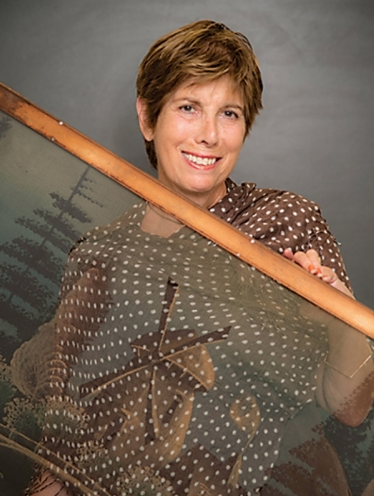Arts & Culture
Q & A: Elaine Eff
Our interview with Elaine Eff, author of 'The Painted Screens of Baltimore: An Urban Folk Art Revealed'
 As you note in the book, painted screens originated in London in the 1700s. Why did they become so popular in Baltimore? One reason: working-class rowhouses. Baltimore’s architecture required an intervention in the name of privacy. Painted screens, because you can see out and no one can see in, provided that measure of privacy for people living in rowhouses with no front yards. They also gave much-needed ventilation in the summer. An East Baltimore shopkeeper named William Oktavec figured that out 100 years ago, and he painted and sold a lot of screens to his neighbors. And being like your neighbor was something that was prized, so the screens multiplied quickly.
As you note in the book, painted screens originated in London in the 1700s. Why did they become so popular in Baltimore? One reason: working-class rowhouses. Baltimore’s architecture required an intervention in the name of privacy. Painted screens, because you can see out and no one can see in, provided that measure of privacy for people living in rowhouses with no front yards. They also gave much-needed ventilation in the summer. An East Baltimore shopkeeper named William Oktavec figured that out 100 years ago, and he painted and sold a lot of screens to his neighbors. And being like your neighbor was something that was prized, so the screens multiplied quickly.
Who were the legendary Baltimore screen painters? There was Johnny Eck, who was a student of Okatavec’s, and Ruth Chrysam was an apprentice of Oktavec’s. There were screen painters and jack-of-all-trades like Ben and Ted Richardson. There were also youngsters like Tom Lipka from Canton.
Any favorites? They’re ALL my favorites—that’s why I wrote the book! Each of them had his or her own wonderful style and reason for going into screen painting.
What did they paint, and what was the source material for that imagery? They often painted nature scenes, or landmark buildings from the old country—the immigrants’ countries of origin, places like Poland or Czechoslovakia—or just about anything found on a greeting card or calendar. They were used because they were easily found and easily copied.
What factors affect the popularity of painted screens, which seems cyclical? The use of air conditioners in the 1950s and 1960s was a major factor. So were the changing demographics of East Baltimore in the 1990s, due largely to social mobility and the aging out of the original population. Modernization of home doors and windows is also a factor, as homeowners remodel and materials change from wood to metal to vinyl. Also, painted screens were embarrassingly affordable into the 1990s. From then on, they were valued as one-of-a-kind custom art and were priced accordingly. The cycle has been up and down for 100 years. Now, we’re experiencing something of a resurgence.
Who are the contemporary screen painters who are keeping the tradition alive, or even reinventing it? People like Dee Herget, the Lipka family, John Oktavec (the grandson of William), Anna Pasqualucci, Monica Broere, John Iampieri, and Pat Michalski. Monica does a sort of mash up of traditional and abstract, Anna paints minutely detailed pieces, and John is a great colorist who produces these mural-like screens for large windows and porches.
Why was the University Press of Mississippi a good home for this book? They are finest folk art press in America. And thanks to a partnership with the Mellon Foundation, we were able to add incredible production values to the book. Producing a coffee table book with over 300 color photos for $35 is unheard of. I think they realized it’s a book that will be evergreen. I feel it’s a book every Baltimorean will want to own, and it will also appeal to people who care about what makes cities beautiful and livable.
